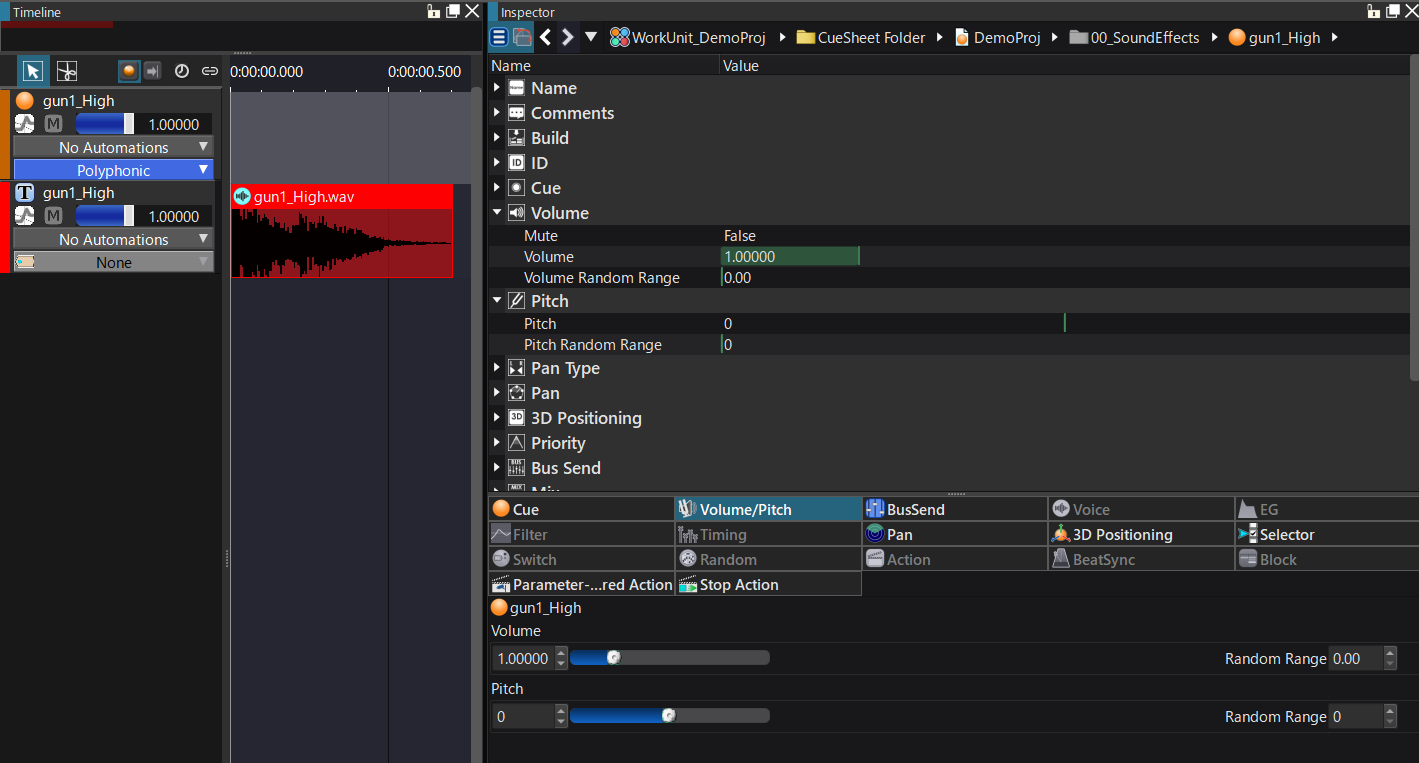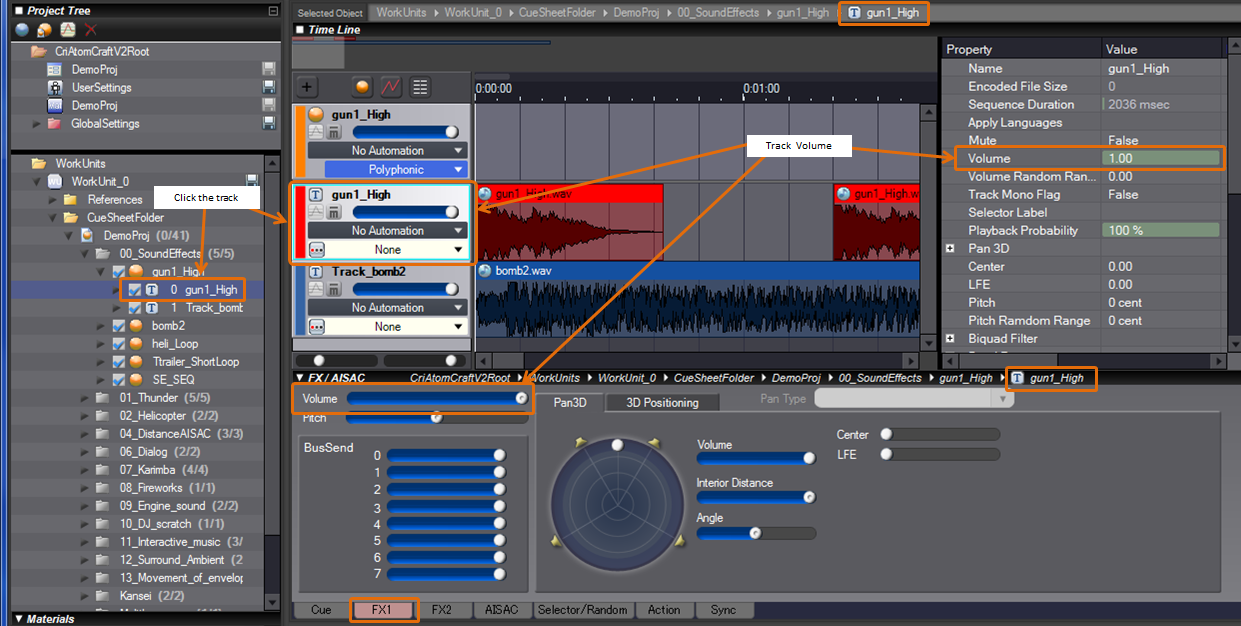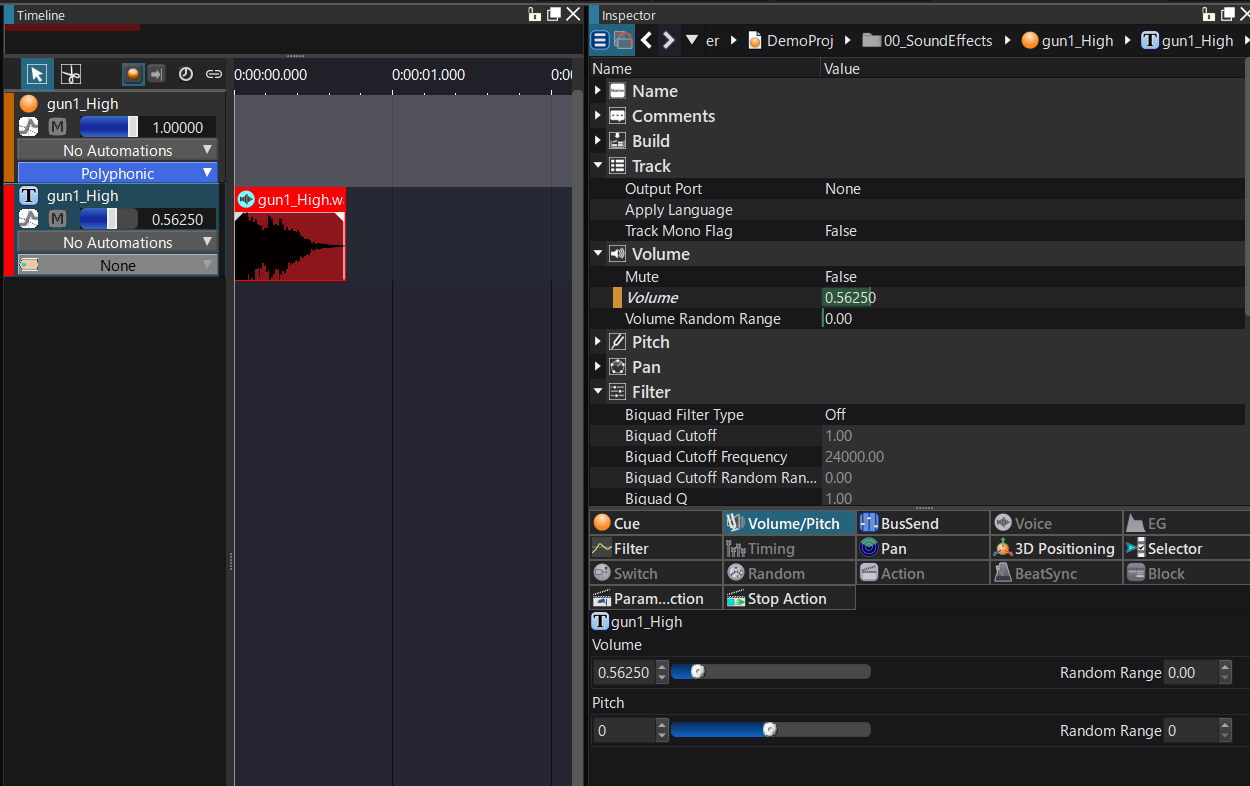When you select a Cue on the tree, the Waveform is displayed on the [Time Line] on the right.

The [Timeline] provides the controls to change three types of volumes:
- Cue volume
- Track volume
- Waveform Region volume
Change each volume as needed.
The final volume is determined by multiplying the volumes of the different objects in the hierarchy together.
For example, when the volume of a waveform region is 1.0, the volume of a track is 0.5, and the volume of a Cue is 1.0,the ultimate output volume is 0.5.

- Note
- If a category is specified in the cue or when the volume value of the cue sheet is changed, the volume values are further multiplied.
At the Volume 0
When the volume of a Cue is 0, the final output volume multiplied becomes 0, and no sound is output.
Even when the volume of the Cue is changed by other actions, it will remain silent.
- Attention
- Sound is being played even when the volume is 0.
The rendering of the waveforms is still being performed even at a silent level.
Mute and Unmute
You can enable the mute feature to stop playing sounds.
Also, in this case, the volume is 0 and the rendering of waveforms is still being performed internally.
The mute feature is similar to setting the volume to 0. The difference is that the mute feature remembers the previous status so that the original volume can be restored by unmuting.
Possibility that the Sound may Crack if the Volume Calculation is over 1
The volume can have a value greater than 1.0 when editing it, but normally the sound may start cracking or being distorted.
For example, for the Category or the CueSheet, in the limited cases where the overall volume is lowered or where the volume of the source Waveform is low, the volume can be raised.
Volume Change Procedure
Changing the Cue volume
First, let's change the volume of a Cue. Drag the volume slider of the Cue to the left to decrease the volume.
You can change the volume both on the timeline and in the Volume/Pitch Inspector displayed under the timeline.

Track Volume
Now let's change the volume of the Track. Drag the volume slider of the Track to the left to lower the volume.
This volume change is combined with the Cue volume therefore the volume will be lowered even more.

Waveform Region Volume
Finally, let's change the volume of the Waveform Region.
After selecting the Waveform placed on the Track, use the volume slider to change the volume of the Waveform Region; (this is done in the [FX1] tab of the [FX/AISAC] panel as shown below).
Note that the Waveform Region must be selected and highlighted with a blue border.
Again, this volume is combined with previous Cue and Track volumes therefore the final volume will be even lower.
